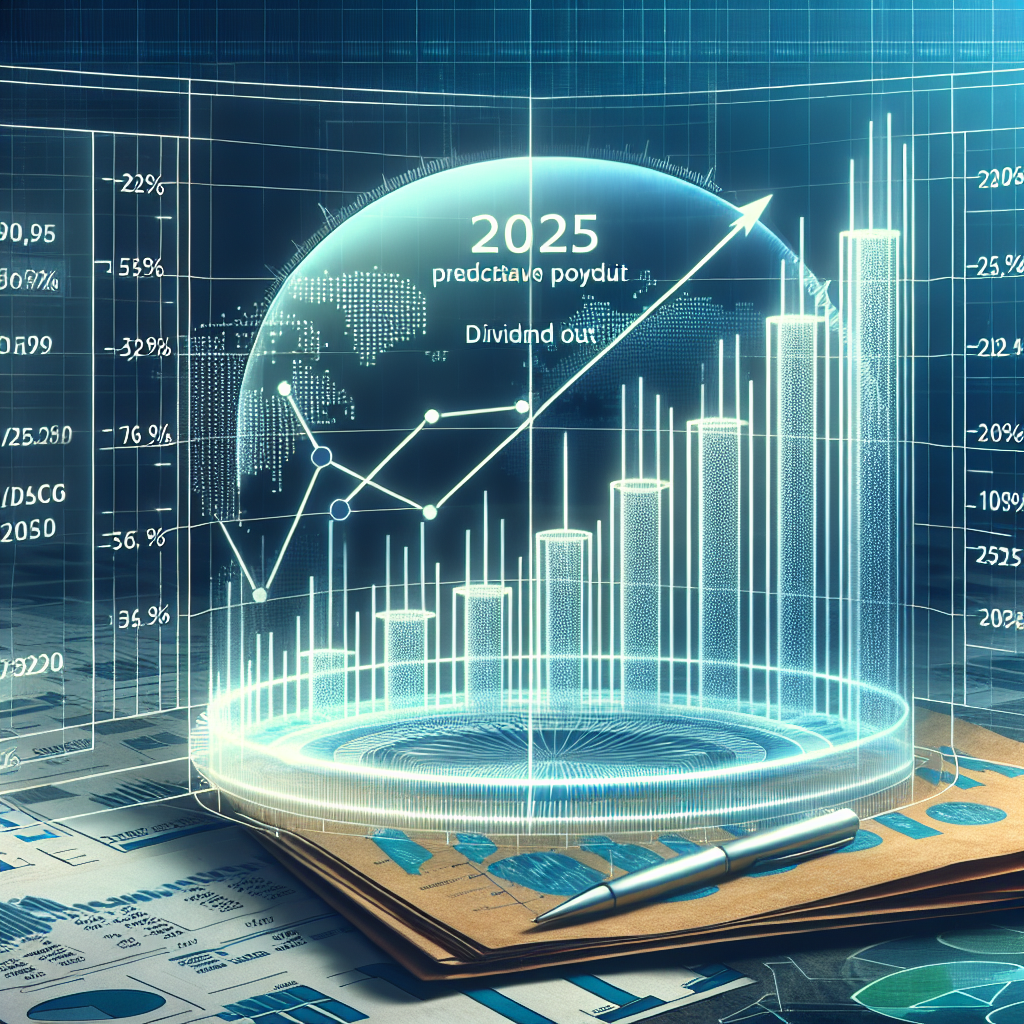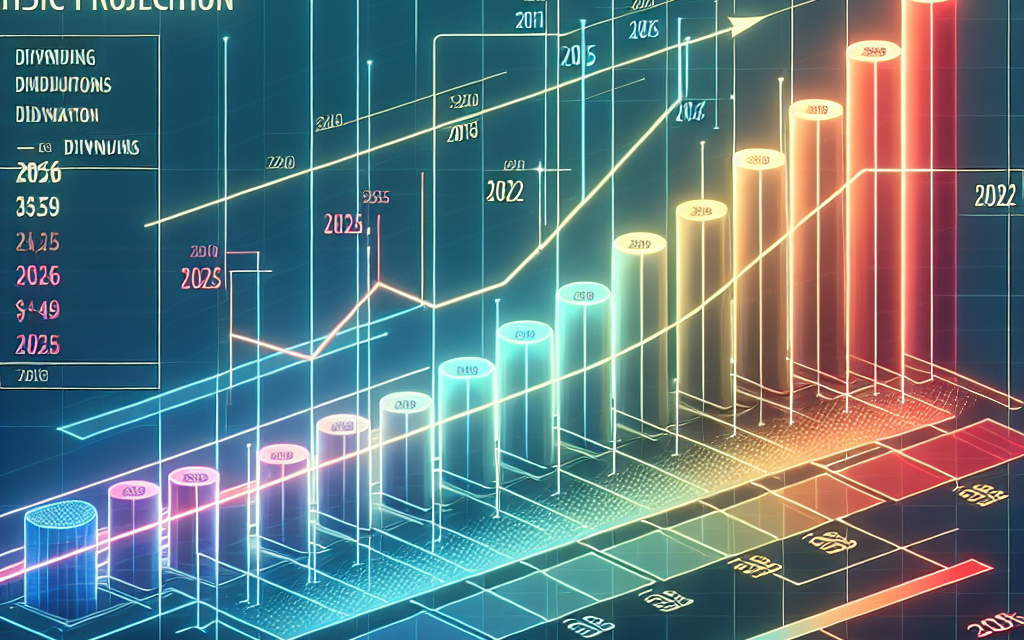“Forecasting Future Dividends: Costco’s 2025 Payout Potential”
Introduction
Projecting Costco’s 2025 dividend payout involves analyzing the company’s historical dividend trends, financial performance, and market conditions to estimate future distributions to shareholders. As a leading wholesale retailer, Costco has demonstrated consistent growth and financial stability, which are crucial factors in determining its ability to sustain or increase dividend payouts. By examining key financial metrics such as revenue growth, profit margins, cash flow, and capital expenditure plans, alongside external economic factors and industry trends, investors can make informed predictions about Costco’s dividend strategy in 2025. This analysis not only aids in understanding the company’s financial health but also provides insights into its commitment to returning value to shareholders.
Analyzing Costco’s Historical Dividend Trends
Costco Wholesale Corporation, a leading player in the retail industry, has consistently demonstrated a commitment to returning value to its shareholders through regular dividend payouts. As we project Costco’s 2025 dividend payout, it is essential to analyze the company’s historical dividend trends to understand the factors that may influence future distributions. Over the years, Costco has established a reputation for financial stability and prudent management, which has been reflected in its dividend policies.
Historically, Costco has maintained a steady and reliable dividend growth trajectory. The company began paying dividends in 2004 and has since increased its dividend payout annually. This consistent growth can be attributed to Costco’s robust business model, which focuses on high-volume sales and low prices, enabling it to generate substantial cash flow. Moreover, Costco’s ability to adapt to changing market conditions and consumer preferences has allowed it to maintain its competitive edge, further supporting its dividend growth.
In addition to regular dividends, Costco has occasionally issued special dividends, which are one-time payments to shareholders. These special dividends are typically distributed when the company experiences exceptional financial performance or accumulates excess cash reserves. For instance, in December 2020, Costco paid a special dividend of $10 per share, highlighting its strong financial position and commitment to rewarding shareholders. Such special dividends, while not guaranteed, indicate the company’s willingness to share its financial success with investors.
As we look towards 2025, several factors will likely influence Costco’s dividend payout. Firstly, the company’s financial performance will play a crucial role. Costco’s ability to sustain its revenue growth and profitability will directly impact its capacity to increase dividends. The company’s expansion plans, including opening new warehouses and enhancing its e-commerce platform, are expected to drive future growth. If these initiatives succeed, they could bolster Costco’s financial position, enabling it to continue its trend of increasing dividends.
Furthermore, Costco’s dividend policy will be influenced by broader economic conditions. Factors such as inflation, interest rates, and consumer spending patterns can affect the company’s financial performance and, consequently, its dividend payouts. For instance, rising inflation could lead to increased operational costs, potentially impacting profitability. However, Costco’s efficient supply chain management and economies of scale may help mitigate these challenges, allowing it to maintain its dividend growth.
Another consideration is Costco’s capital allocation strategy. The company must balance returning capital to shareholders with reinvesting in its business for long-term growth. While dividends are an essential component of shareholder returns, Costco may prioritize investments in technology, infrastructure, and sustainability initiatives to ensure its continued success in a competitive retail landscape. This strategic approach could influence the pace of dividend increases in the coming years.
In conclusion, projecting Costco’s 2025 dividend payout requires a comprehensive analysis of its historical dividend trends and an understanding of the factors that may impact future distributions. While the company’s consistent dividend growth and occasional special dividends demonstrate its commitment to shareholders, future payouts will depend on its financial performance, economic conditions, and capital allocation strategy. As Costco continues to navigate the evolving retail environment, its ability to adapt and innovate will be crucial in sustaining its dividend growth and delivering value to its shareholders.
Factors Influencing Costco’s Dividend Policy
Projecting Costco’s 2025 dividend payout requires a comprehensive understanding of the various factors influencing the company’s dividend policy. As a leading wholesale retailer, Costco’s financial decisions are shaped by a multitude of internal and external elements. To begin with, the company’s financial performance is a primary determinant of its dividend policy. Costco’s revenue growth, profit margins, and cash flow generation are critical indicators of its ability to sustain and potentially increase dividend payouts. Historically, Costco has demonstrated robust financial health, characterized by consistent revenue growth and strong cash flow, which bodes well for future dividend increases.
In addition to financial performance, Costco’s capital expenditure plans play a significant role in shaping its dividend policy. The company is known for its strategic investments in new store openings, supply chain enhancements, and technological advancements. These investments are essential for maintaining competitive advantage and driving long-term growth. However, they also require substantial capital allocation, which can impact the funds available for dividend distribution. Therefore, any significant increase in capital expenditures could potentially limit the scope for dividend hikes in the near term.
Moreover, Costco’s dividend policy is influenced by its balance sheet strength and debt levels. A strong balance sheet with manageable debt levels provides the company with greater flexibility to return capital to shareholders. Costco has traditionally maintained a conservative financial structure, with low debt levels relative to its earnings. This prudent approach not only supports its dividend policy but also positions the company to weather economic uncertainties without compromising shareholder returns.
Another factor to consider is the broader economic environment, which can have a profound impact on Costco’s dividend decisions. Economic conditions, such as inflation rates, interest rates, and consumer spending patterns, can affect the company’s operational performance and, consequently, its ability to pay dividends. For instance, during periods of economic downturn, consumer spending may decline, potentially affecting Costco’s sales and profitability. In such scenarios, the company may opt to preserve cash and prioritize financial stability over dividend increases.
Furthermore, Costco’s competitive landscape and market positioning are crucial considerations in its dividend policy. The retail industry is highly competitive, with players constantly vying for market share. Costco’s ability to maintain its competitive edge through pricing strategies, membership growth, and customer loyalty programs can influence its financial performance and dividend capacity. A strong market position enables the company to generate stable cash flows, supporting consistent dividend payouts.
Additionally, shareholder expectations and market sentiment can also impact Costco’s dividend policy. Investors often view dividends as a sign of a company’s financial health and commitment to returning value to shareholders. As such, maintaining a stable or growing dividend can enhance investor confidence and support the company’s stock price. Costco’s management is likely to consider these factors when making dividend decisions, balancing the need to reward shareholders with the imperative to invest in future growth.
In conclusion, projecting Costco’s 2025 dividend payout involves analyzing a complex interplay of factors, including financial performance, capital expenditure plans, balance sheet strength, economic conditions, competitive positioning, and shareholder expectations. While the company has a strong track record of delivering value to shareholders through dividends, its future payouts will depend on its ability to navigate these influencing factors effectively. As such, investors should closely monitor these elements to gain insights into Costco’s potential dividend trajectory in the coming years.
Economic Indicators Impacting Costco’s 2025 Dividend
As we look towards 2025, projecting Costco’s dividend payout requires a comprehensive understanding of the economic indicators that could influence the company’s financial decisions. Costco, a leading wholesale retailer, has consistently demonstrated robust financial health, which is reflected in its dividend payouts. However, several economic factors could impact its future dividend strategy.
To begin with, the overall economic growth rate is a crucial determinant. A strong economy generally boosts consumer spending, which in turn can lead to increased sales for retailers like Costco. If the global and domestic economies continue to expand at a healthy pace, Costco could experience higher revenue growth, providing the company with more flexibility to increase its dividend payouts. Conversely, if economic growth slows, Costco might adopt a more conservative approach to its dividends to preserve cash flow.
Inflation is another significant factor to consider. Rising inflation can erode consumer purchasing power, potentially affecting Costco’s sales. However, Costco’s business model, which emphasizes bulk purchasing and competitive pricing, may allow it to weather inflationary pressures better than some competitors. If inflation remains moderate, Costco might maintain or even increase its dividend payouts. On the other hand, if inflation surges, the company might prioritize reinvestment in operations over dividend increases to manage costs effectively.
Interest rates also play a pivotal role in shaping dividend policies. With the Federal Reserve’s monetary policy influencing borrowing costs, changes in interest rates can impact Costco’s financial strategy. Lower interest rates generally reduce the cost of borrowing, potentially freeing up more capital for dividend payments. However, if interest rates rise, Costco might face higher financing costs, which could lead to a more cautious approach regarding dividend increases.
Furthermore, the competitive landscape in the retail sector cannot be overlooked. As e-commerce giants and other retailers continue to innovate and expand, Costco must remain agile and responsive to maintain its market position. Investments in technology, supply chain enhancements, and customer experience improvements may require significant capital allocation. While these investments are crucial for long-term growth, they could influence the company’s dividend decisions in the short term.
Additionally, Costco’s internal financial health, including its profit margins and cash reserves, will directly impact its ability to sustain or increase dividend payouts. The company’s historical performance indicates a strong balance sheet and consistent profitability, which bodes well for future dividends. However, any unexpected financial challenges or strategic shifts could necessitate a reevaluation of its dividend policy.
Lastly, shareholder expectations and market sentiment are important considerations. Investors often view dividends as a sign of a company’s financial stability and confidence in future earnings. Costco’s management will likely weigh these expectations against the need to reinvest in the business to ensure sustainable growth. Striking the right balance between rewarding shareholders and investing in future opportunities will be key to determining the company’s dividend strategy.
In conclusion, projecting Costco’s 2025 dividend payout involves analyzing a complex interplay of economic indicators, including economic growth, inflation, interest rates, competitive dynamics, and internal financial health. While the company is well-positioned to navigate these challenges, its ability to adapt to changing economic conditions will ultimately shape its dividend policy. As such, investors should closely monitor these factors to gain insights into Costco’s future dividend prospects.
Comparing Costco’s Dividend Strategy with Competitors

In the realm of retail giants, Costco Wholesale Corporation has consistently stood out not only for its robust business model but also for its shareholder-friendly dividend strategy. As we project Costco’s 2025 dividend payout, it is essential to compare its approach with that of its competitors to understand the nuances that set it apart. Historically, Costco has maintained a conservative yet rewarding dividend policy, characterized by regular quarterly dividends complemented by occasional special dividends. This strategy has been instrumental in attracting a loyal investor base, eager for both stability and the potential for unexpected windfalls.
In contrast, many of Costco’s competitors, such as Walmart and Target, have adopted more traditional dividend strategies. Walmart, for instance, has a long-standing reputation for consistent dividend increases, having raised its annual dividend for over four decades. This approach appeals to investors seeking predictable income growth. Target, on the other hand, has also demonstrated a commitment to regular dividend increases, albeit with a slightly more aggressive growth rate compared to Walmart. Both companies prioritize steady dividend growth, reflecting their stable cash flow and commitment to returning capital to shareholders.
However, Costco’s strategy diverges in its emphasis on special dividends. These are typically issued when the company experiences particularly strong financial performance, allowing it to distribute excess cash to shareholders. This approach not only rewards investors but also reflects Costco’s operational efficiency and ability to generate substantial free cash flow. As we look towards 2025, it is reasonable to anticipate that Costco will continue this pattern, potentially increasing its regular dividend while also issuing special dividends when circumstances permit.
Moreover, Costco’s dividend strategy is closely tied to its overall financial health and growth prospects. The company’s ability to maintain low prices and high membership renewal rates has consistently driven strong sales and profitability. This financial strength underpins its capacity to sustain and potentially enhance its dividend payouts. In comparison, competitors like Walmart and Target, while financially robust, face different challenges and opportunities that influence their dividend policies. For instance, Walmart’s extensive international operations and Target’s focus on e-commerce expansion require significant capital investment, which can impact their dividend strategies.
Furthermore, the broader economic environment and industry trends will play a crucial role in shaping Costco’s dividend outlook for 2025. Factors such as inflation, consumer spending patterns, and supply chain dynamics will influence the company’s financial performance and, consequently, its ability to distribute dividends. While these factors also affect competitors, Costco’s unique business model, characterized by its membership-based revenue structure and efficient supply chain management, provides a degree of resilience that may support continued dividend growth.
In conclusion, as we project Costco’s 2025 dividend payout, it is evident that the company’s strategy, while distinct from its competitors, is well-suited to its operational strengths and market position. By balancing regular and special dividends, Costco offers a compelling value proposition to investors seeking both stability and the potential for enhanced returns. As the retail landscape continues to evolve, Costco’s ability to adapt and thrive will be pivotal in determining the trajectory of its dividend policy, setting it apart from its peers in the competitive retail sector.
The Role of Membership Growth in Costco’s Dividend Projections
Costco Wholesale Corporation, a leading global retailer, has consistently demonstrated robust financial performance, largely attributed to its unique business model centered around membership-based shopping. As investors look towards 2025, understanding the role of membership growth in Costco’s dividend projections becomes crucial. Membership fees, a significant revenue stream for Costco, not only contribute to the company’s bottom line but also provide a stable foundation for dividend payouts. Therefore, analyzing the trajectory of membership growth offers valuable insights into the potential for increased dividends in the coming years.
To begin with, Costco’s membership model is a cornerstone of its business strategy, fostering customer loyalty and ensuring a steady revenue stream. The company offers two primary membership tiers: Gold Star and Executive, with the latter providing additional benefits and incentives. Over the years, Costco has experienced consistent membership growth, driven by its reputation for quality products and competitive pricing. This growth is not only indicative of customer satisfaction but also reflects the company’s ability to expand its market reach. As membership numbers rise, so does the revenue from membership fees, which in turn enhances Costco’s capacity to distribute dividends to its shareholders.
Moreover, the relationship between membership growth and dividend payouts is underscored by Costco’s financial strategy. The company has a history of returning value to its shareholders through regular dividend payments and occasional special dividends. As membership fees constitute a high-margin revenue stream, they significantly bolster Costco’s cash flow, enabling the company to maintain and potentially increase its dividend payouts. In this context, projecting Costco’s 2025 dividend payout necessitates a thorough examination of anticipated membership trends.
Looking ahead, several factors are likely to influence Costco’s membership growth trajectory. Firstly, the company’s ongoing expansion efforts, both domestically and internationally, are expected to attract new members. By opening new warehouses in strategic locations, Costco can tap into underserved markets and enhance its membership base. Additionally, the company’s focus on e-commerce and digital transformation is poised to complement its physical presence, offering a seamless shopping experience that appeals to a broader audience. As Costco continues to innovate and adapt to changing consumer preferences, its ability to attract and retain members is likely to strengthen.
Furthermore, economic conditions and consumer behavior trends will play a pivotal role in shaping membership growth. In times of economic uncertainty, consumers often gravitate towards retailers that offer value for money, a niche that Costco effectively occupies. By maintaining its commitment to low prices and high-quality products, Costco can capitalize on this trend, potentially boosting its membership numbers. Consequently, a sustained increase in membership growth would provide a solid foundation for projecting higher dividend payouts in 2025.
In conclusion, the role of membership growth in Costco’s dividend projections cannot be overstated. As the company continues to expand its footprint and adapt to evolving market dynamics, its ability to attract and retain members will be instrumental in driving revenue from membership fees. This, in turn, will enhance Costco’s capacity to distribute dividends, offering a promising outlook for investors. By closely monitoring membership trends and aligning its strategies accordingly, Costco is well-positioned to deliver value to its shareholders through increased dividend payouts in the years to come.
Financial Health and Its Effect on Costco’s Future Dividends
Costco Wholesale Corporation, a leading player in the retail industry, has consistently demonstrated robust financial health, which has been a key factor in its ability to provide attractive dividends to its shareholders. As we look towards 2025, understanding the financial dynamics that could influence Costco’s dividend payout is crucial for investors seeking to make informed decisions. The company’s financial health, characterized by strong revenue growth, efficient cost management, and a solid balance sheet, plays a pivotal role in shaping its dividend policy.
To begin with, Costco’s revenue growth has been impressive over the years, driven by its unique business model that emphasizes membership-based sales and bulk purchasing. This model not only ensures a steady stream of income but also fosters customer loyalty, which is essential for long-term financial stability. As the company continues to expand its global footprint, particularly in emerging markets, it is likely to experience further revenue growth. This expansion is expected to bolster Costco’s financial position, thereby enhancing its capacity to maintain or even increase its dividend payouts in the coming years.
Moreover, Costco’s commitment to cost management has been instrumental in sustaining its profitability. The company’s ability to negotiate favorable terms with suppliers and maintain low operational costs has allowed it to offer competitive prices to consumers while preserving healthy profit margins. This operational efficiency is a critical factor that supports Costco’s dividend policy, as it ensures that the company can generate sufficient free cash flow to distribute to shareholders. As long as Costco continues to prioritize cost management, it is well-positioned to sustain its dividend payouts.
In addition to revenue growth and cost management, Costco’s strong balance sheet further underscores its financial health. The company has consistently maintained a low debt-to-equity ratio, which indicates prudent financial management and a conservative approach to leveraging. This financial stability not only provides a cushion against economic uncertainties but also enhances Costco’s ability to return capital to shareholders through dividends. As we project towards 2025, maintaining a strong balance sheet will be crucial for Costco to continue its dividend payouts without compromising its financial flexibility.
Furthermore, it is important to consider the broader economic environment and its potential impact on Costco’s dividend policy. Factors such as inflation, interest rates, and consumer spending trends can influence the company’s financial performance and, consequently, its ability to pay dividends. However, Costco’s resilience in navigating economic challenges, as demonstrated during past downturns, suggests that it is well-equipped to adapt to changing market conditions. This adaptability, coupled with its strong financial foundation, bodes well for the company’s future dividend prospects.
In conclusion, Costco’s financial health is a key determinant of its future dividend payouts. The company’s strong revenue growth, efficient cost management, and solid balance sheet provide a firm foundation for sustaining and potentially increasing dividends as we approach 2025. While external economic factors may pose challenges, Costco’s proven ability to adapt and thrive in various market conditions enhances its prospects for maintaining a favorable dividend policy. Investors can take confidence in Costco’s financial strength as they consider the potential for future dividend income from this retail giant.
Expert Predictions on Costco’s 2025 Dividend Payout
As we look towards the future of Costco’s dividend payouts, it is essential to consider the company’s historical performance, current financial health, and broader economic trends. Costco Wholesale Corporation, a leading player in the retail sector, has consistently demonstrated robust financial growth and stability, making it a reliable dividend-paying stock for investors. Historically, Costco has maintained a steady increase in its dividend payouts, reflecting its strong earnings and commitment to returning value to shareholders. This trend is likely to continue as the company navigates the evolving retail landscape.
To project Costco’s 2025 dividend payout, one must first examine the company’s financial fundamentals. Costco’s revenue growth has been impressive, driven by its unique membership-based model, competitive pricing, and efficient supply chain management. The company’s ability to generate substantial cash flow is a critical factor in its capacity to sustain and potentially increase dividend payouts. Furthermore, Costco’s low debt levels and strong balance sheet provide a solid foundation for future financial commitments, including dividends.
In addition to its financial health, Costco’s strategic initiatives play a crucial role in shaping its dividend policy. The company has been investing heavily in expanding its global footprint, enhancing its e-commerce capabilities, and improving its product offerings. These investments are expected to drive long-term growth, thereby supporting higher dividend payouts. Moreover, Costco’s focus on sustainability and corporate responsibility resonates well with consumers and investors alike, potentially boosting its brand value and financial performance.
However, projecting Costco’s 2025 dividend payout also requires an understanding of the broader economic environment. The retail sector is subject to various external factors, such as consumer spending patterns, inflation rates, and geopolitical tensions, all of which can impact Costco’s financial performance. For instance, rising inflation could lead to increased operational costs, potentially affecting profit margins and, consequently, dividend payouts. On the other hand, a strong economic recovery post-pandemic could bolster consumer confidence and spending, positively influencing Costco’s revenue and dividend prospects.
Furthermore, the competitive landscape in the retail industry cannot be overlooked. Costco faces competition from both traditional brick-and-mortar retailers and online giants like Amazon. To maintain its competitive edge, Costco must continue to innovate and adapt to changing consumer preferences. Successful adaptation could result in sustained revenue growth and, by extension, increased dividends. Conversely, failure to keep pace with competitors could pressure the company’s financial performance and limit its ability to raise dividends.
In light of these considerations, expert predictions for Costco’s 2025 dividend payout remain cautiously optimistic. Analysts generally agree that Costco is well-positioned to continue its trajectory of dividend growth, albeit at a potentially moderated pace due to external uncertainties. The company’s strong financial foundation, strategic investments, and commitment to shareholder value are likely to support ongoing dividend increases. However, investors should remain vigilant and consider potential risks that could impact future payouts.
In conclusion, while projecting Costco’s 2025 dividend payout involves a degree of uncertainty, the company’s historical performance, financial health, and strategic direction provide a solid basis for optimism. By carefully navigating economic challenges and competitive pressures, Costco is expected to maintain its status as a reliable dividend-paying stock, offering value to its shareholders in the years to come.
Q&A
1. **What is Costco’s current dividend payout trend?**
– Costco has consistently increased its dividend payout annually, reflecting strong financial performance and commitment to returning value to shareholders.
2. **What factors influence Costco’s dividend payout decisions?**
– Factors include company earnings, cash flow, capital expenditure needs, economic conditions, and strategic growth plans.
3. **How has Costco’s revenue growth impacted its dividend payouts historically?**
– Strong revenue growth has supported higher dividend payouts, as increased earnings provide more cash available for distribution to shareholders.
4. **What is the expected growth rate of Costco’s dividends by 2025?**
– Analysts project a moderate annual growth rate in dividends, potentially around 8-10%, based on historical trends and expected financial performance.
5. **How might Costco’s expansion plans affect its dividend payouts by 2025?**
– Expansion plans could lead to higher capital expenditures, which might moderate dividend growth if significant funds are allocated to new store openings and infrastructure.
6. **What role does Costco’s cash flow play in determining future dividend payouts?**
– Strong and stable cash flow is crucial for sustaining and potentially increasing dividend payouts, ensuring the company can meet its financial obligations while rewarding shareholders.
7. **What external economic factors could impact Costco’s dividend payouts by 2025?**
– Economic factors such as inflation, interest rates, and consumer spending trends could influence Costco’s profitability and, consequently, its ability to maintain or increase dividend payouts.
Conclusion
Projecting Costco’s 2025 dividend payout involves analyzing several key factors, including historical dividend trends, the company’s financial health, growth prospects, and broader economic conditions. Historically, Costco has demonstrated a consistent pattern of increasing its dividend payouts, supported by strong revenue growth and robust cash flow generation. The company’s solid financial position, characterized by low debt levels and a strong balance sheet, provides a stable foundation for continued dividend increases. Additionally, Costco’s strategic initiatives, such as expanding its e-commerce presence and international footprint, are likely to drive further growth, potentially enhancing its ability to increase dividends. However, external factors such as economic fluctuations, changes in consumer spending, and competitive pressures could impact future payouts. Overall, while there are uncertainties, Costco’s track record and strategic positioning suggest a favorable outlook for its 2025 dividend payout, with a reasonable expectation of continued growth in line with its historical performance.





